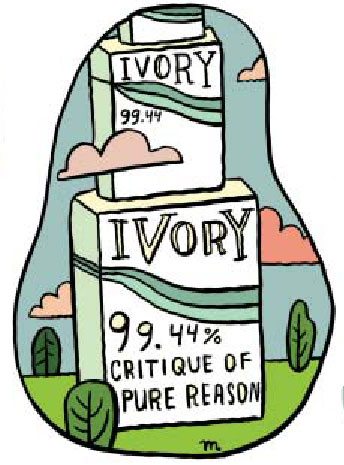
When the Internal Revenue Service surveys, potential respondents answer. The IRS just issued preliminary findings from its survey of 400 colleges and universities [read the PDF]. The report has information about 344 higher ed institutions (177 private, 167 public)—159 small colleges (with less than 5,000 students), 94 medium-sized (with 5,000 to 14,999 students), and 91 large colleges and universities (with 15,000 or more students). Other institutions were excluded for not being tax-exempt, only offering 2-year degrees, or in 11 cases, answering the questionnaires incorrectly. The most anticipated parts of the survey findings involve compensation of college presidents and generation of unrelated business income. A quick review of the summary findings (for the respondents’ 2006 tax year) reveals the following statistical nuggets, some of them pretty obvious, which we list here as “No Kidding” findings. Other findings were less obvious and raised a few eyebrows around the office. We call those “How about That?” findings:
|
'No Kidding' findings |
'How about That?' findings |
|
Median tuition at large private universities was $30,000 compared to $5,200 in-state and $14,500 out-of-state for large public universities |
Despite earning business income, some universities apparently have never filed 990-T forms: 82% of large colleges had advertising income but only 53% reported that on 990-Ts; 25% of large colleges operate hotels, but only 11% reported that on their 990-Ts; 36% of large institutions had earned income from computer services, but only 12% reported that on their 990-Ts |
|
Median gross revenue for small colleges was $21 million, $145 million for medium-sized colleges, and $457 million for large institutions |
Some institutions apparently don’t have endowments: only 52% of small institutions and 73% of medium-sized institutions reported having endowments (the figure was higher than 85% for large institutions) |
|
“Excess revenue” or the operating surplus for the year, subtracting expenses from revenues, was $1 million for small colleges, $8 million for medium-sized schools, and $27 million for large universities |
Average and median endowment assets per student were higher for small and large institutions than for medium sized colleges: Median endowment assets per full-time student—small ($14,000), medium ($5,000), large ($7,000); average endowment assets per student—small ($56,000), medium ($34,000), large ($66,000) Sign up for our free newslettersSubscribe to NPQ's newsletters to have our top stories delivered directly to your inbox. By signing up, you agree to our privacy policy and terms of use, and to receive messages from NPQ and our partners. |
|
Lots of schools, particularly large universities, engaged in activities that generated unrelated business income: 82% earning income from advertising (including 35% from radio/TV), 76% of large schools making money from corporate sponsorships (45% from radio/TV), 96% from facility rentals (such as recreation/athletic facilities), 25% from operation of hotel, 34% from a restaurant, and 55% for logo usage |
13-15% of college endowment dollars are invested in hedge funds, one of the least transparent kinds of market investments for the public to understand what kinds of activities university dollars support |
|
A sports coach was the highest paid employee (other than an officer or director) in 16% of medium-sized colleges and 43% of large colleges; |
For large universities, the average compensation of the highest paid key employee (other than officer, director, executive) paid directly by the university was $727,000, the median was $285,000, compared to $236,000 and $165,000 for medium-sized universities and $142,000 and $98,000 for small colleges |
|
Some key employees other than officers, directors, and executives receive their compensation through “related organizations” such as university foundations, particularly for large colleges: the average compensation paid by related organizations for highest paid key employees in large universities was $498,000 and the median $204,000, compared to $166,000 and $47,000 for medium-sized universities and $129,000 and $121,000 for small universities |
In a small number of surveyed foundations, the highest paid key employees are paid both by the university and related organizations; for 13 large organizations in the survey, the average income of these highest paid, jointly compensated key employees was $936,000 and the median $698,000 |
|
For the six top officers, directors, and executives, the schools supplemented their incomes with a variety of benefits in addition to health and retirement benefits: 58% of large schools, 49% of medium-sized schools, and 40% for small schools provide personal use of university vehicles; 42% of large colleges, 18% of medium-sized schools, and 20% of small schools pay for health/social club dues; 52% of large schools, 55% of medium-sized schools, and 32% of small schools provide housing and utilities; and, reported in absolute numbers rather than percentages, 10 out of 88 large universities, 9 out of 92 medium-sized universities, and 9 of 148 small schools reported providing loans and/or extensions of credit |
Universities highest paid officers, directors, or executives are often paid less than these key employees, in large universities with an average compensation of $420,000 and median compensation of $351,000, an average of $312,000 and a median of $231,000 for mid-sized schools, and an average of $200,000 and median compensation of $174,000 for small colleges (Note: a large number of schools eschew following the “rebuttable presumption” procedures of Section 4958 of the Internal Revenue Code for setting compensation levels for officers, directors, and executives, including 45% of small colleges, 29% of medium-sized schools, and 38% of large organizations) |
Maybe this is all ho-hum information to NPQ readers. We’re guessing some items might catch the attention of NPQ readers, particularly the issue of how many nonprofit and public universities are earning unrelated business income—and perhaps not necessarily reporting it as assiduously as they earn it. You know that the unrelated income earned by nonprofit and public entities attracts attention from state and federal oversight entities. The data in this report were “preliminary” findings from the IRS survey.
Above: Aaron Meshon's "Ivory Tower" – Source













